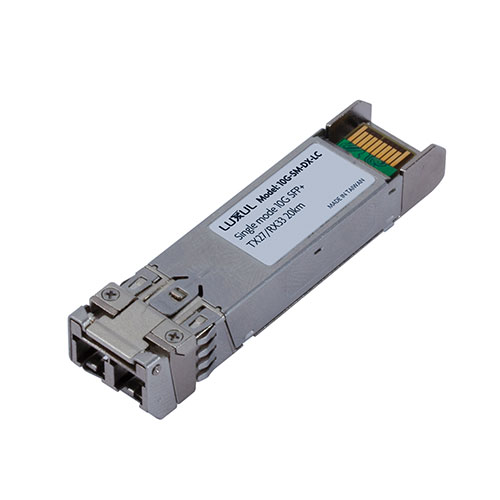Posted on 6/30/2018 by Luxul Team
By John Epeneter, product manager
In our previous post on fiber optics, “7 Reasons You Should Consider Fiber on Your Next Install,” we gave you some really good reasons to consider fiber (not just dietary). In this post, we’ll start exploring the different options with fiber and which you should consider for your installs.

First, a few basics about the physical characteristics of fiber optic cable. Fiber optic cable has several layers:
- The center is called the core. It’s the only material that carries light and is usually made of glass; however, the core can also be made of other materials—like plastic (POF = Plastic Optical Fiber).
- The core of different fiber optic cables is noted by its diameter measurement in microns (a micron, or micrometer, is one millionth of a meter, and its symbol is mm).
- Surrounding the core is a layer of material called cladding. This cladding is what traps the light inside the core.
- The core and cladding together are what is usually called the fiber.
- The fiber is surrounded by coating that protects it from moisture and other harmful things.
- Finally, surround that with more layers of protection, and you get the final product. The color of this outer layer of fiber is standardized so you can tell what type of fiber you have.
Now, let’s start exploring those options. There are two main categories of fiber—singlemode and multimode. And within each category, there are several classifications.
Singlemode fiber comes in two classifications:
- OS1 is typically for indoor use
- OS2 is typically for outdoor use
*OS = Optical Singlemode
Multimode fiber comes in five classifications:
- OM1 through OM5
- OM3 through OM5 are laser optimized
*OM = Optical Multimode
For additional reference, the chart below outlines the different cable types, the jacket color (for non-military usage), and the distances for those cables depending on the desired Ethernet speed:
| Fiber Optic Cable Type | Fiber Cable Distance (m) | |||||
| 1G Ethernet (1000BASE-SX) | 1G Ethernet (1000BASE-LX) | 10G Ethernet (10GBASE-SR) | ||||
| Mode | Class | Color | Core | |||
| Multi | OM1 | Orange | 62.5 | 275 | 550 | N/A |
| OM2 | Orange | 50 | 550 | 550 | N/A | |
| OM3 | Aqua | 50 | 550 | 550 | 300 | |
| OM4 | Aqua | 50 | 550 | 550 | 400 | |
| OM5 | Lime Green | 50 | 550 | 550 | 300 | |
| Single | OS1/OS2 | Yellow | 9 | 5,000 | 5,000 | 10,000 |
How do I decide which one to use?
As the chart indicates, speed and distance are the primary determinants of the type of cable you will use. Most installations won’t have cable runs that exceed the distance of multimode, even at higher speeds, and since multimode installations will cost less, it will work best for a large majority of circumstances. However, if you need the longer distances that singlemode fiber supports, then go with that cable type.
Knowing which type of fiber cable to choose can feel like an overwhelming task. We hope this post helped clarify for you the easiest way to determine which type of fiber cable to choose in your future installs! And as always, we appreciate your feedback!

 All News
All News